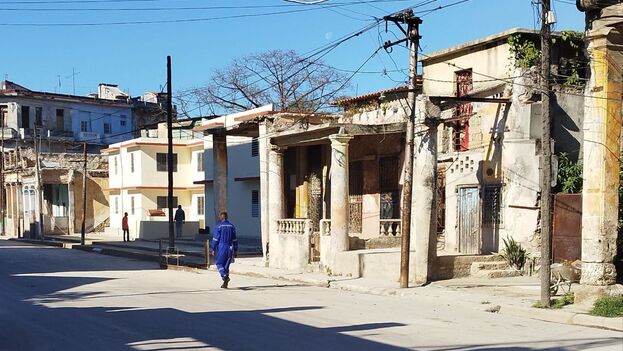
![]() 14ymedio, Juan Diego Rodríguez, Havana, 12 January 2023 – The residents who lived in the buildings at Zulueta 508 and 512 adjacent to the Hotel Saratoga have gone from having one of the best views in the capital to a view of the ruins which surround their new homes. After the tragedy on 6 May 2022, which caused them to lose their homes when the historical luxury building exploded due to a gas leak, those affected are now going to have a roof over their heads again, but the good news ends there.
14ymedio, Juan Diego Rodríguez, Havana, 12 January 2023 – The residents who lived in the buildings at Zulueta 508 and 512 adjacent to the Hotel Saratoga have gone from having one of the best views in the capital to a view of the ruins which surround their new homes. After the tragedy on 6 May 2022, which caused them to lose their homes when the historical luxury building exploded due to a gas leak, those affected are now going to have a roof over their heads again, but the good news ends there.
On Avenida de España, better known as Calle Vives, between the streets of Carmen and Figuras, there are eight new houses which have been given to some of the victims of the Saratoga explosion, in which 47 people lost their lives. According to the official press, the buildings are “almost ready” and their new occupiers “may help in the finalisation of electrical details”.
Tribuna de La Habana published the news on Wednesday, detailing that in the houses they have used a system of ’formwork’ known as FORSA, for which they use precast concrete, and there’s a cistern for guaranteeing the water supply. “This Wednesday marks another day for demonstrating that with constancy, organisation and control, any target can be reached”, concludes the extremely short article, surrounded by close-up photos of the new buildings.
But you only need to zoom out a little bit to see the future occupants’ new reality. The surrounding houses are on the point of collapse, if they haven’t collapsed already, and there’s a stench which fills the streets of a district which, despite being in Old Havana, lacks any attractive features and hardly any tourists venture there.
Whereas before, they only needed to step outside of their homes to find themselves just a few metres from the restored Capitolio, the Brotherhood Park, the main taxi rank in the city, or the shops on Calle Monte and the restored areas around the hotels near to Central Park — now, their surroundings are much less pleasant.
As a street which takes you to Havana’s Central Railway Station, Calle Vives once had its fashionable heyday, due particularly to a constant flow of rail travellers and merchandise. However, with the passage of time this area suffered a deterioration of its building stock — via a decline in the Island’s rail system — and a disdain shown to it by plans for restoration of the Historic Centre, which have left this part of the city forgotten.
Now more of a neighbourhood with a bad reputation, Atarés lies among some of the the least valued districts of Old Havana, and not only because of its wrecked buildings and its potholed streets and its puddles of sewage water, but also because of its frequent problems in the water supply, which forces many residents to bring water in from other areas.
On one corner, a man selling chopos hesitates when a buyer asks him if they’re over-spicy. “Doesn’t matter — the customer concludes — I’ll have to eat them anyway, ’cause I don’t have anything else”. All the passers-by are residents of this forgotten corner of Havana, where the poverty feels even worse when compared to the more privileged area from where its new neighbours are about to arrive.
Translated by Ricardo Recluso
____________
COLLABORATE WITH OUR WORK: The 14ymedio team is committed to practicing serious journalism that reflects Cuba’s reality in all its depth. Thank you for joining us on this long journey. We invite you to continue supporting us by becoming a member of 14ymedio now. Together we can continue transforming journalism in Cuba.
